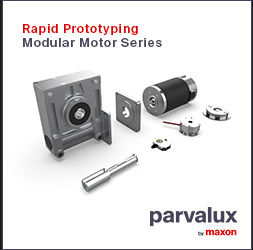New winding technology boosts motor efficiency
As the world braces for ever more stringent regulations aimed at curbing carbon emissions, a new winding technology promises to both increase motor efficiency and its power factor while using a surprisingly cost-effective method.
Motor manufacturers are in a race to switch to more energy-efficient technologies to help countries reduce greenhouse gas emissions, as part of a global strategy to combat climate change. While many motor makers look to substitute more iron or copper in their induction motor product lines, or switch to other motor technologies, a U.S.-based company has developed a new stator winding topology that delivers more power while reducing energy intake.
Revolution Motor Industries, LLC (RMI), a small but savvy company based in St.Petersburg, Florida, has introduced a new winding technique that improves a three-phase induction motors efficiency by one IE class. The technology, tested at 1.5 kw, 37 kw and 225 kw by Advanced Energy - one of Americas premier electrical motor test labs - has delivered results that illustrate RMIs efficiency improvements over a wide range of application loads. The auxiliary winding uses smaller capacitors to improve the power factor without impacting motor efficiency.
"This new method will allow someone to go from an IE1 to an IE2 level, in a very cost-effective way, merely through winding, and then from an IE2 to an IE3. We are currently rewinding a number of 3.7 kw IE3 motors to acheive IE4 performance, which is where many companies in Europe are now moving in terms of AC induction motor efficiency," explains Dan Jones, the acting chief engineer for RMI and an electric motor designer with over 50 years of experience at a number of organizations. "You dont need magnets, all you need is a winding change to achieve higher motor efficiency performance that will be required by various regulatory agencies as our industry tries to become more energy-efficient."
Benefits shared across multiple industries
In Europe and elsewhere, electric motors account for about two thirds of industrial power consumption and about 45% of global power usage. That means almost half of all power plants worldwide produce electricity for the sole purpose of running motors, and that any gains in efficiency have a large impact on comsumption. This is where RMIs technology can play a major role at reducing carbon dioxide emissions.
"This new winding technology could benefit any industry that uses AC induction motors. Heating, ventilating, air conditioning, water pumping for many waterworks that we have around the world. It could be used in fans that send both hot and cold energy down the ducts that we use for heating and cooling off buildings. The number of applications are very numerous," Jones says.
Dan Jones will discuss the topic further at the CWIEME exhibition for coil winding, insulation and electrical manufacturing in Berlin. The event has become the largest and longest-running gathering for the electrical manufacturing community and will welcome thousands of international product design, manufacturing, quality assurance, R&D, and procurement professionals from across the motor, generator, transformer, automotive, energy, and consumer electronics sectors.
Jones seminar, ‘Increasing motor efficiency using a new winding topology - CWIEME breakfast briefing takes place at the CWIEME Central theatre on Tuesday 10th May at 9:15. The session will be held in English and is free for all visitors to attend.
CWIEME Berlin
Dates: 10-12th May 2016
Venue: Messe Berlin, South Entrance, Messedamm 22, 14055 Berlin, Germany
Opening times: Tuesday and Wednesday 09:00-18:00, Thursday 09:00-16:00
Admission: An on-site registration fee of €40 will apply for those who have not already registered online.
Featured Product

